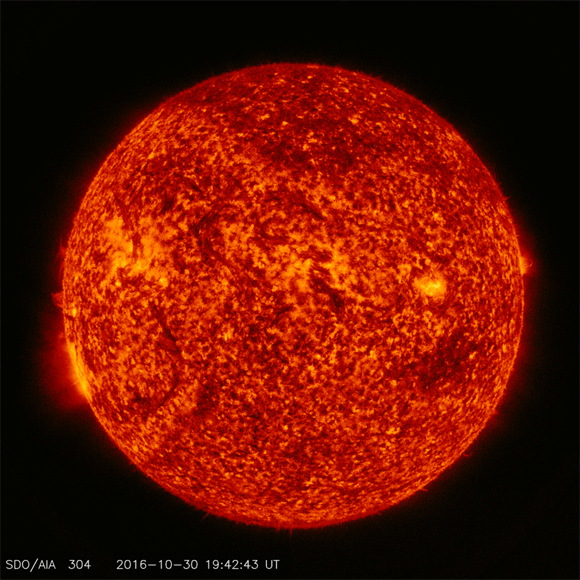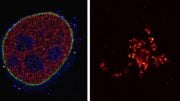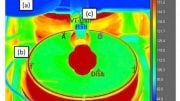
On October 30, 2016, NASA’s Solar Dynamics Observatory, or SDO, experienced a partial solar eclipse in space when it caught the moon passing in front of the sun. The lunar transit lasted one hour, between 3:56 p.m. and 4:56 p.m. EDT, with the moon covering about 59 percent of the sun at the peak of its journey across the face of the sun.
NASA’s Solar Dynamics Observatory experienced a partial solar eclipse in space when it caught the moon passing in front of the sun.
The moon’s shadow obstructs SDO’s otherwise constant view of the sun, and the shadow’s edge is sharp and distinct, since the moon has no atmosphere which would distort sunlight.
From SDO’s point of view, the sun appears to be shaking slightly – but not because the solar observatory was spooked by this near-Halloween sight. Instead, the shaking results from slight adjustments in SDO’s guidance system, which normally relies upon viewing the entire sun to center the images between exposures. SDO captured these images in extreme ultraviolet light, a type of light invisible to human eyes. The imagery here is colorized in red.









Be the first to comment on "NASA’s Solar Dynamics Observatory Captures a Partial Solar Eclipse"